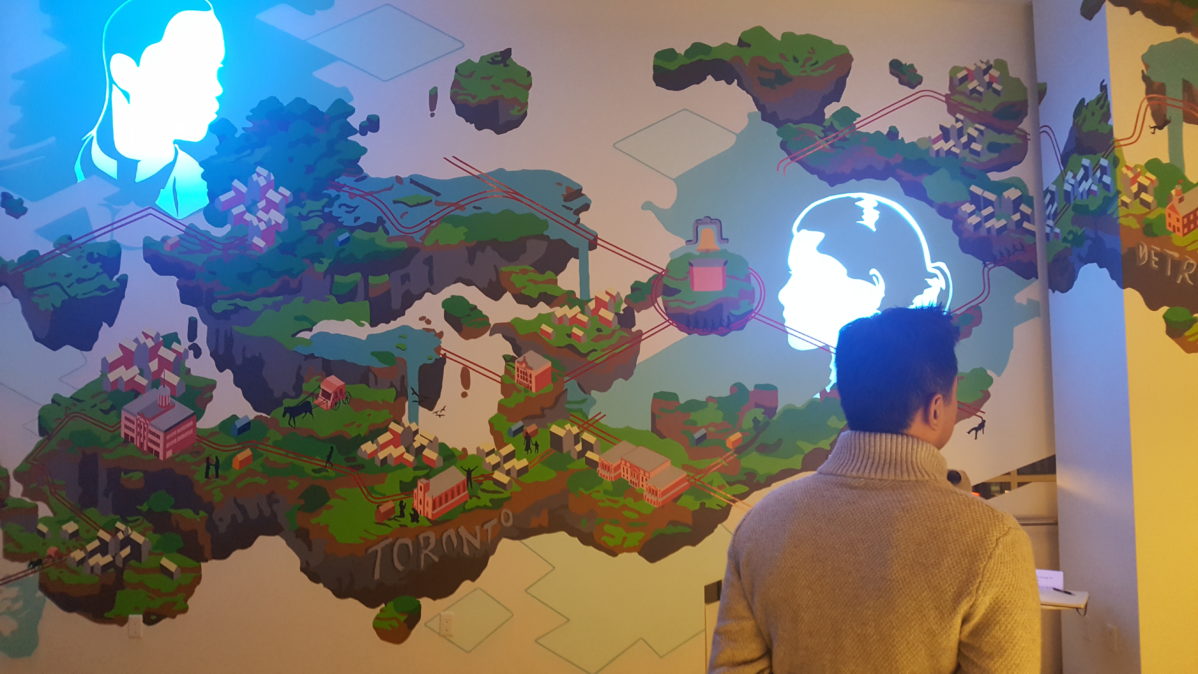Story of Lucie and Thornton Blackburn shared in a mural at the George Brown College student residence
It was once a forgotten tale of the underground railroad, seemingly lost to history. Now, one of the most fascinating stories of early Toronto is part of the student residence at George Brown College.
The Lucie and Thornton Blackburn Conference Centre opened last night at George Brown’s student residence, The George, accompanied with the unveiling of a brand new mural celebrating the life and accomplishments of the once-forgotten family. The Blackburns, former slaves who fled the United States through the Underground Railroad, were among Toronto’s first community leaders, philanthropists, and anti-slavery activists.
Yet despite being buried beside George Brown, one of the founder’s of confederation and our school’s namesake, the story of the Blackburns was lost until Dr. Karolyn Smardz Frost, archeologist and an adjunct professor at Acadia University uncovered their story. Compiling their history into a book, I’ve Got a Home in Glory Land: A Lost Tale of the Underground Railroad, Frost’s work won of the Governor-General’s Literary Award for Non-Fiction and brought the Blackburns’ story into the public eye. The book tells the harrowing story of the couple’s escape from Kentucky to Canada, as well as Thornton Blackburn’s solitary return many years later to rescue his mother from slavery.
“(The Blackburns) were the first extradition case between Canada and the United States,” Frost said. “Their case is what brought forth the first articulated refugee reception policy we have in Canada.”
Fleeing from slave-catchers in Detroit, the couple was rescued during the Blackburn Riots and people helped the two escape across the border into Canada. After settling in Toronto in 1834 the couple started Toronto’s first taxi-cab company and helped found Trinity Church, on King Street.
Despite prominence and respect in their time, the Blackburns had no children and could not write—their life-story was not recorded and shared until Frost found records indicating that Thornton Blackburn, a black man, ran his own company in 1830s Toronto. The Blackburns records gave Frost the idea that there was more to their story.
The Student Association of George Brown College, which funds The Dialog, originally campaigned for the student residence to be named after the Blackburns.
Sally Horsfall Eaton, Chancellor of George Brown College, was on hand at the opening of the Blackburn Conference Centre this past Wednesday night.
“I think it means a lot to the whole community. This has been in the works for 20 years,” she said. “It’s really very serendipitous that we as George Brown got to co-ordinate with the Ontario Black History Society around getting this centre as part of our college. The Blackburns were very much part of the community, they lived right near here. And our community is very diverse; we represent all of Toronto, and I just think the Blackburns were amazing people.”
The mural was designed by three George Brown College students and tells the story of Lucie and Thornton Blackburn’s place in Toronto’s history.
“This is a proud moment for all of us. The Blackburn’s story teaches people of all backgrounds the values of courage and determination,” said Nikki Clark, president of the Ontario Black History Society.
“This is a proud moment for all of us. The Blackburn’s story teaches people of all backgrounds the values of courage and determination,” said Nikki Clark, president of the Ontario Black History Society.
“The mural is a beautiful vehicle to share this narrative and the conference centre collaborative space to promote the exchange of ideas.”
The Lucie and Thornton Blackburn Conference Centre has 4,500 square feet, fits a capacity crowd of 217, has two separate meeting rooms and a bar where people can mingle before an event.


